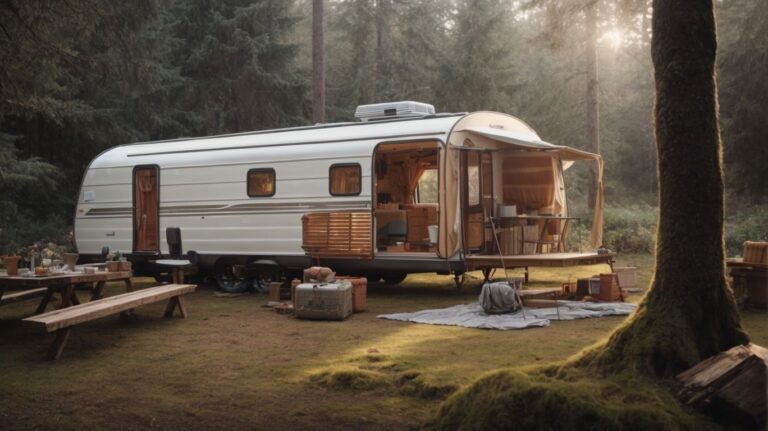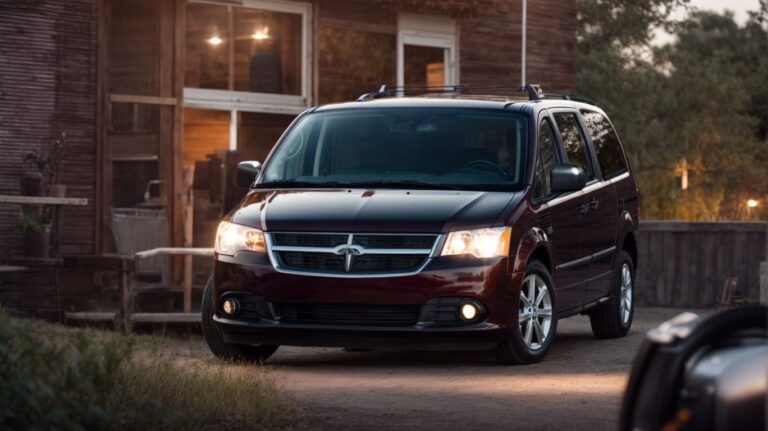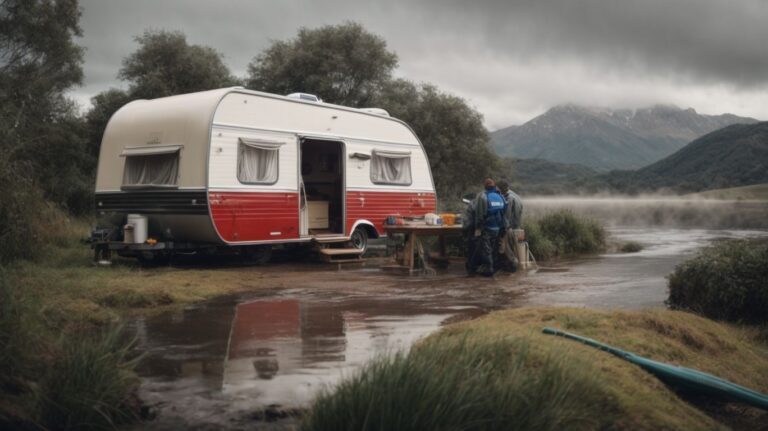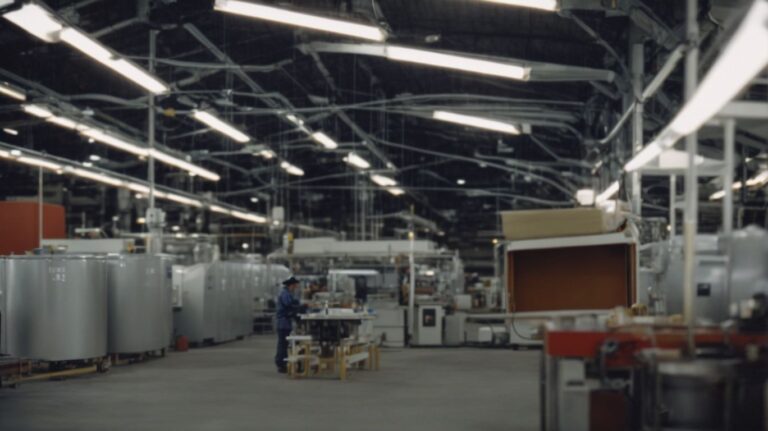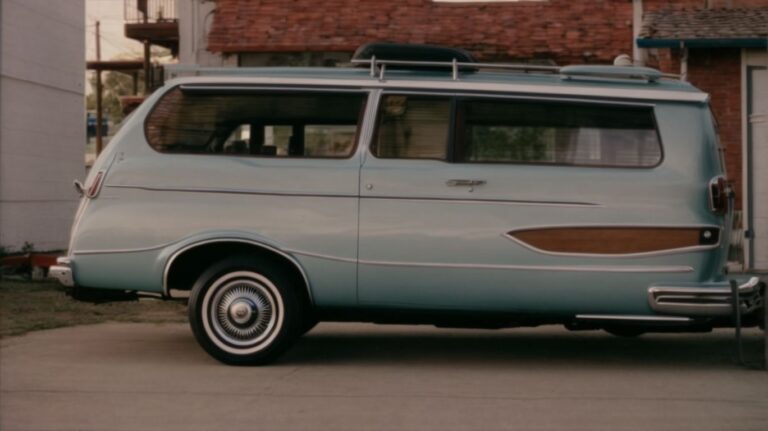What Are Caravan Panels Made Of? Materials Explained
Are you curious about caravan panels and the different materials used to make them?
We will explore the various types of caravan panels, including aluminium, fiberglass, composite, and plywood panels.
We’ll discuss the advantages and disadvantages of each material to help you determine which one is the best for your caravan.
Learn how caravan panels are made and get tips on how to maintain them.
Stay tuned to learn more about this essential component of your caravan!
Key Takeaways:
What Are Caravan Panels?
Caravan panels are essential components used in the construction of caravans, providing structural integrity and insulation for the vehicles.
These panels are favored for their lightweight properties, making them ideal for creating a composite caravan that ensures efficient fuel consumption and ease of towing. Typically, these panels consist of a foam core sandwiched between two layers of durable material such as fiberglass or aluminum, offering a balance of strength and weight. The foam core not only contributes to the lightness of the panels but also provides excellent insulation, keeping the caravan comfortable in various weather conditions. This construction method enhances the overall energy efficiency of the caravan, reducing heating and cooling costs. The choice of materials ensures the longevity and resilience of these panels against wear and tear, making them a reliable component in caravan manufacturing.
What Are The Different Types of Caravan Panels?
Caravan panels come in various types, including aluminium, fiberglass, composite, and plywood panels, each offering unique characteristics and advantages for caravan construction.
Motion Activated RV Step Lights, 10 LED Battery Operated Motorhome Motion Sensor led Light Strip, Magnetic Night Light Bar for Motorhome Travel,Travel Trailers, Camper (2 Pack)
- 【Infrared Induction Motion Detection】Motion sensor light on the PIR sensor can detect human movement, 10 feet once your approach is detected, the rv step lights will automatically turn on in the dark, in the absence of detected motion or other light sources, 18 seconds after the automatic shutdown, a large degree of power savings and improved durability.
Camco TST MAX RV Toilet Treatment Drop-INs - Control Unwanted Odors & Break Down Waste and Tissue - Safe Septic Tank Treatment - Orange Scent, 30-Pack (41183)
- Toilet Deodorizer With Reactive Odor-Eliminating Technology: Experience a powerful RV odor eliminator that stops RV black tank odors for up to 7 days. Just (1) toilet drop in treats camper toilets with up to a 40-gallon tank.
THANSTAR Collapsible Dish Drying Rack Portable Dinnerware Drainer Organizer for Kitchen RV Campers Travel Trailer Space Saving Kitchen Storage Tray
- 【Food Grade Material】Made from eco-friendly PP+TPR material that is BPA Free and Food-Grade. The flexible material allows the dish strainers for kitchen counter to collapse flat for easy space-saving and storage, making the most of your kitchen countertop.
Camco RhinoFLEX 20-Ft RV Sewer Hose Kit - Features Clear Elbow Fitting w/Removable 4-in-1 Adapter - Connects to 3” Slip or 3”/3.5”/4” NPT Threaded Sewer Connection (39742)
- Superior RV Tank Dumping: Streamline RV holding tank dumping with Camco’s RhinoFLEX 20' Camper Sewer Hose Kit. Built tough & flexible, this all-inclusive RV septic hose system provides simple & effective tank dumping on your camping adventures.
Camco Tastepure RV Water Filter - New & Advanced RV Inline Water Filter with Flexible Hose Protector - GAC & KDF Water Filter - Made in USA - Camping Essentials for Fresh Drinking Water (40043)
- Advanced 6-Step Filtration Technology: Experience the extraordinary power of Hex-Flow Technology & its remarkable 6-step filtration process. Every layer works together to provide you with water that is exceptionally clean.





Aluminium panels are known for their lightweight yet strong nature, making them ideal for caravan exteriors. They provide excellent durability, corrosion resistance, and can withstand harsh weather conditions.
Fiberglass panels are popular for their high strength-to-weight ratio and flexibility. They are impact-resistant, easy to mold, and offer good insulation properties, making them suitable for both interiors and exteriors.
Composite panels, combining materials like fiberglass, foam, and plywood, offer a balance of strength, insulation, and weight savings. They are versatile and can be customized for specific caravan requirements.
Plywood panels are cost-effective and easy to work with, providing good insulation properties and structural integrity. They are commonly used in caravan interiors for cabinets, walls, and flooring.
Aluminium Panels
Aluminium panels are known for their lightweight construction, durability, weatherproofing capabilities, and resistance to corrosion, making them popular choices for caravan manufacturers.
These panels provide a perfect balance between strength and weight, offering structural integrity without adding unnecessary heft. Their rust-resistant properties make them ideal for outdoor applications, ensuring longevity and minimal maintenance requirements. Aluminium panels come in a variety of finishes and colors, enabling manufacturers to customize the appearance of caravans while maintaining the core benefits of lightweightness and robustness. Whether for walls, roofs, or exteriors, these panels offer a cost-effective solution that withstands the elements with ease.
Fiberglass Panels
Fiberglass panels are valued for their excellent strength-to-weight ratio, insulation properties, resistance to weathering, and repair options, making them a popular choice in caravan construction.
The strength-to-weight ratio of fiberglass panels is one of their key advantages, as they offer exceptional durability while remaining lightweight, allowing for easier handling and installation compared to traditional materials.
These panels provide excellent insulation capabilities, helping to regulate temperature inside caravans, keeping occupants comfortable in various weather conditions. Their resistance to weathering ensures longevity and minimal maintenance requirements, making them a cost-effective choice in the long run.
If there is damage, fiberglass panels are relatively easy to repair, offering a more straightforward and cost-efficient solution compared to other construction materials. This repair flexibility adds to their appeal for caravan manufacturers and owners alike.





Composite Panels
Composite panels, incorporating XPS foam and GRP layers, offer a lightweight construction, excellent insulation, and high mechanical strength, making them ideal for efficient caravan manufacturing.
These panels consist of a core of XPS foam, known for its exceptional thermal properties, sandwiched between layers of GRP for added durability. The combination of these materials results in a structure that is not only lightweight but also incredibly strong, able to withstand various weather conditions and external impacts.
The XPS foam provides excellent insulation, reducing heat loss and enhancing energy efficiency, which is crucial in caravan design for maintaining a comfortable interior climate. The GRP layers offer additional protection against moisture ingress and UV radiation, extending the lifespan of the panels.
Plywood Panels
Plywood panels, often combined with a timber frame, provide robustness, homeliness, and UV resistance for caravans, enhancing comfort and durability.
These panels are exceptionally durable, making them capable of withstanding the rigors of travel and harsh weather conditions, ensuring a long-lasting investment for caravan owners. When used in conjunction with timber frames, plywood panels contribute to a warm and inviting interior ambiance, creating a cozy and homely feel within the caravan.
The UV resistance offered by plywood panels helps maintain their appearance and structural integrity even when exposed to sunlight for prolonged periods, reducing the risk of fading or degradation. This feature not only enhances the aesthetic appeal of the caravan but also prolongs the lifespan of the construction materials.
What Are Caravan Panels Made Of?
Caravan panels can be made of various materials, including aluminium, fiberglass, composite materials, and plywood, each providing distinct attributes and benefits for caravan construction.
Aluminium panels are renowned for their lightweight yet durable properties, making them ideal for caravan construction. They offer excellent corrosion resistance, allowing for longevity and minimal maintenance requirements.
Fiberglass panels, on the other hand, are known for their high strength-to-weight ratio and flexibility, providing great impact resistance and insulation properties. This material is also resistant to moisture and temperature variations, ensuring durability in various climates.
Composite panels combine different materials such as fiberglass, aluminium, and foam cores to create a strong, lightweight, and insulating structure. These panels offer superior strength and rigidity, while also being corrosion-resistant and easy to mold into complex shapes.





Plywood, a traditional caravan panel material, provides a sturdy and cost-effective option. While heavier than some alternatives, plywood panels offer good structural integrity, versatility, and the ability to be easily repaired or replaced.
Aluminium Panels
Aluminium panels are crafted from durable aluminium sheets, known for their corrosion resistance, lightweight design, weatherproof properties, and overall durability, ensuring long-lasting performance in caravan applications.
The manufacturing process of aluminium panels involves cutting and shaping aluminium sheets into desired sizes and dimensions, followed by treatments to enhance corrosion resistance and improve overall durability. These panels are preferred for their high strength-to-weight ratio, making them ideal for applications where lightweight construction is crucial.
Their inherent weatherproof characteristics make them suitable for outdoor use, withstanding various weather conditions without deteriorating. This resilience against corrosion and harsh weather elements contributes to their long-lasting performance and low maintenance requirements in caravan structures.
Fiberglass Panels
Fiberglass panels are composed of fibreglass reinforced with epoxy resin, offering exceptional strength, weather resistance, and durability for caravan applications.
The fibreglass material in these panels provides a lightweight yet robust structure, making them ideal for use in caravans where weight matters. Combined with the epoxy resin, the fibreglass ensures a high level of durability and impact resistance against harsh weather conditions.
The weather-resistant properties of fibreglass panels make them perfect for outdoor applications, as they are able to withstand extreme temperatures, UV rays, and moisture without deteriorating. This longevity ensures that caravan owners can enjoy the benefits of these panels for an extended period without worrying about constant maintenance or replacements.
Composite Panels
Composite panels, such as those from LAMILUX, combine lightweight design with exceptional thermal efficiency and mechanical strength, offering superior performance in caravan construction.
These innovative panels are typically constructed by bonding two thin but sturdy outer layers to a core material, often composed of materials like foam or honeycomb structures. The resulting sandwich-like structure not only ensures reduced overall weight, making them ideal for applications where weight plays a critical role, but also provides excellent insulation properties, enhancing the thermal efficiency of the caravan. The mechanical strength of composite panels makes them highly durable and resistant to bending or deformation, ensuring longevity and structural integrity in various environmental conditions.
Plywood Panels
Plywood panels, often combined with timber frames and fibreglass layers, provide excellent thermal insulation, mechanical strength, and durability, enhancing the structural integrity and comfort of caravans.





Timber frames offer a sturdy framework that complements the flexibility and lightweight nature of plywood, resulting in a balanced and robust structure. The fibreglass layers act as a protective shield, adding an extra layer of resilience against weather elements, impacts, and wear. This combination creates a harmonious blend of materials that not only ensures longevity but also makes the caravan construction process more efficient and cost-effective.
What Are The Advantages of Each Material?
Each material used in caravan panels offers specific advantages: aluminium panels provide lightweight and weatherproof solutions, fiberglass panels offer strength and repair options, composite panels ensure thermal efficiency and mechanical strength, while plywood panels enhance homeliness and robustness.
Aluminium panels, known for their corrosion resistance, are great for long-term outdoor use, making them ideal for caravan exteriors. Their lightweight nature contributes to fuel efficiency and easier handling.
On the other hand, fiberglass panels, with their high impact resistance, provide durability against harsh weather conditions and minor accidents, and are relatively easy to repair when damaged, ensuring longevity.
Composite panels, featuring a combination of materials like fiberglass, foam, and aluminum skins, offer a balanced blend of strength, insulation, and rigidity. This results in excellent thermal capabilities, reducing heating and cooling costs for the caravan, and providing enhanced structural stability during travel, contributing to a smoother ride experience.
Meanwhile, plywood panels, despite being traditional, bring a touch of warmth to the caravan interior, creating a cozy atmosphere. Their robustness makes them suitable for heavy-duty applications, offering a sturdy foundation for fixtures and fittings, and supporting overall structural integrity.
Aluminium Panels
Aluminium panels excel in providing lightweight, weatherproof, corrosion-resistant solutions, ensuring durability and longevity in caravan constructions.
Due to their lightweight nature, aluminium panels contribute significantly to enhancing fuel efficiency in caravans, reducing the overall weight load that the vehicle needs to carry. Their weatherproof properties shield the caravan’s interior from extreme weather conditions, ensuring a comfortable and safe travel experience for occupants. The corrosion resistance of aluminium panels means they can withstand exposure to moisture, salt, and other environmental factors, extending the lifespan of the caravan. This attribute also reduces maintenance requirements, making aluminium panels a cost-effective choice in the long run.
Fiberglass Panels
Fiberglass panels offer advantages such as strength, insulation properties, repair options, and resistance to weathering, making them reliable choices for caravan construction.
One of the standout features of fiberglass panels in caravan applications is their exceptional strength. These panels provide structural integrity and durability, ensuring long-term reliability for the caravan’s construction. Fiberglass panels are known for their excellent insulation capabilities, helping to regulate internal temperatures and provide a comfortable living environment. In terms of maintenance, fiberglass panels offer a range of repair options, allowing for easy fixes and replacements. Their resistance to weathering ensures that they can withstand harsh outdoor conditions without deteriorating, making them a practical choice for caravan exteriors.”





Composite Panels
Composite panels with XPS foam and GRP layers deliver exceptional thermal efficiency, mechanical strength, and lightweight design, ensuring optimal performance in caravan constructions.
The combination of XPS foam and GRP layers in composite panels creates a highly effective barrier against heat transfer, making them superb insulators. This ensures that caravans stay comfortable in various weather conditions, reducing the need for excess heating or cooling.
The mechanical strength provided by these panels enhances the overall durability of the caravan structure, offering resistance against impacts and structural stress. This translates to a longer lifespan for the caravan and less maintenance required over time.
The lightweight construction of the panels contributes to easier handling during installation and transportation, reducing labor costs and making the overall construction process more efficient.
Plywood Panels
Plywood panels combined with timber frames offer advantages such as UV resistance, comfort, and durability, enhancing the aesthetics and structural integrity of caravans.
UV resistance in plywood panels ensures longevity by minimizing the effects of sunlight exposure, protecting both the material and the timber frame from deterioration. This feature also contributes to maintaining the original appearance of the caravan, making it a visually appealing choice.
Regarding comfort, plywood’s versatility allows for customization to provide insulation properties, regulating internal temperatures and reducing noise, enhancing the overall comfort level within the caravan.
The durability of plywood panels complement the strength of timber frames, creating a robust structure that can withstand various environmental conditions, ensuring long-lasting performance and structural stability.
What Are The Disadvantages of Each Material?
While each material has its advantages, there are specific disadvantages to consider: aluminium panels might dent easily, fiberglass panels can be challenging to repair, composite panels may have higher costs, and plywood panels could be susceptible to moisture damage.
In terms of aluminium panels, although they are lightweight and offer good strength, one of the drawbacks is their susceptibility to dents upon impact, making them less ideal in situations where the exterior can be prone to rough handling or encounters with hard objects. Fiberglass panels have their own set of issues, as they can be tough and durable, but repairing damaged areas can be intricate and may require specialized knowledge and materials, potentially leading to higher repair costs.





In contrast, while composite panels are known for their versatility, strength, and design options, the initial investment can be relatively higher compared to other materials, making them less budget-friendly for some caravan owners. Moisture damage is a common concern for plywood panels, as exposure to water or high humidity levels can lead to swelling, warping, and potential structural degradation over time, requiring regular monitoring and maintenance to prevent such issues.
Aluminium Panels
Aluminium panels, despite their benefits, can be prone to denting, might require careful handling due to their lightweight, repair could be challenging, and initial costs may be higher compared to other materials.
One major disadvantage of using aluminium panels in caravans is their susceptibility to dents, which can occur easily from minor impacts during regular use. These dents not only affect the aesthetic appeal but can also weaken the structural integrity of the caravan. Due to the lightweight nature of aluminium, extra caution is necessary during handling to prevent unintentional dents or damage.
In terms of repairs, aluminium panels can pose challenges. Unlike some other materials, such as fiberglass, repairing dents or scratches on aluminium requires specialized skills and tools. This can result in higher repair costs and longer turnaround times, impacting the overall ownership experience.
The initial costs of opting for aluminium panels in caravan construction tend to be higher compared to traditional materials like steel or fiberglass. While aluminium offers benefits such as corrosion resistance and lightweight construction, the higher upfront investment may deter some buyers who are working within a strict budget.
Fiberglass Panels
Fiberglass panels, while sturdy, may pose repair challenges, add weight to caravans, require maintenance for longevity, and have potential environmental impacts during production and disposal.
One of the significant drawbacks of utilizing fiberglass panels in caravans is the complexity of repair. In the case of damage, repairing fiberglass panels can be a meticulous task, often requiring specialized knowledge and materials. This not only adds to the cost but also extends the downtime of the caravan. The weight of fiberglass panels can increase the overall weight of the caravan, impacting fuel efficiency and maneuverability.
Fiberglass panels demand regular maintenance to uphold their quality and appearance. Failure to do so can result in degradation and reduced lifespan of the panels. The environmental impact of fiberglass, both during production and disposal, is a concern. The production process of fiberglass panels involves the use of energy-intensive methods, while disposing of fiberglass at the end of its lifecycle can raise environmental issues due to its non-biodegradable nature.
Composite Panels
Composite panels, while efficient, may have higher costs, require specialized repair methods, add weight to caravans, and pose challenges in terms of disposal due to their composite nature.
One disadvantage of using composite panels in caravans is the higher initial costs associated with these materials. Although they offer durability and performance benefits, the upfront investment can be a deterrent for some buyers. The specialized repair methods needed for composite panels can be more complex and costly compared to traditional materials. This can lead to higher maintenance expenses over time, impacting the overall ownership costs of a caravan.





Weight considerations are another factor to bear in mind when using composite panels in caravans. While these panels are lightweight compared to some alternatives, they may still contribute to an increase in overall weight, which can impact fuel efficiency and towing capacity. This additional weight can also put strain on other components of the caravan, potentially leading to higher maintenance costs in the long run.
The disposal challenges associated with composite panels can be a concern for environmentally conscious consumers. Due to their complex composition, these panels are not easily recyclable and may end up in landfills, adding to environmental waste. Proper disposal of composite materials requires specialized processes, which can be both costly and logistically challenging, creating an added concern for those looking to reduce their carbon footprint.
Plywood Panels
Plywood panels, while offering homeliness, may be susceptible to moisture damage, add weight to caravans, require periodic refurbishment for maintaining aesthetics, and pose challenges in wet environments.
Moisture damage can be a critical concern with plywood panels in caravans, as any exposure to excessive humidity or water can lead to warping, delamination, and mold growth, compromising structural integrity and durability. The added weight from plywood can impact fuel efficiency and overall driving performance, potentially making the caravan less maneuverable and increasing fuel consumption.
Refurbishing plywood panels in caravans can be a labor-intensive task, requiring sanding, sealing, and painting to maintain their visual appeal over time. This maintenance work is not only time-consuming but also adds to the overall cost of ownership.
In wet environments, such as camping in rainy conditions or near bodies of water, plywood panels are at a higher risk of absorbing moisture, leading to swelling, decay, and a higher likelihood of structural issues. This can also create a breeding ground for mold and mildew, posing health risks to occupants of the caravan.
Which Material Is The Best For Caravan Panels?
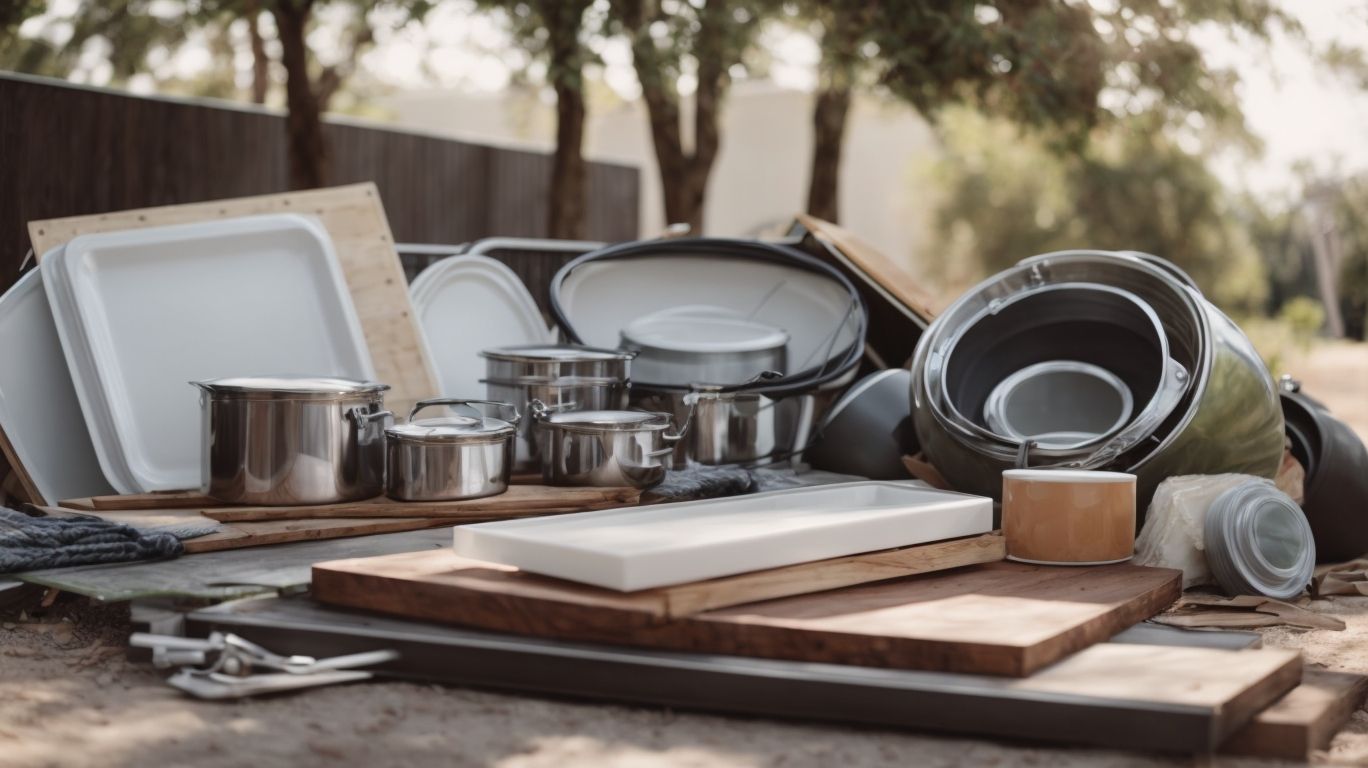
Credits: Motorcaravanning.Com – Aaron Thomas
Determining the best material for caravan panels involves assessing the advantages and disadvantages of aluminium, fiberglass, composite, and plywood panels, as well as considering factors like manufacturing efficiency and cost-effectiveness.





Aluminium panels offer durability and lightweight properties, making them resistant to corrosion, ideal for harsh outdoor conditions. Fiberglass, on the other hand, provides flexibility and can easily be molded into different shapes, enhancing design possibilities. Composite panels combine the strength of various materials, offering a good balance of durability and weight. Plywood panels, while cost-effective, may be prone to moisture damage if not sealed properly.
Manufacturing efficiency varies among these materials, with aluminium being relatively easier to produce in large quantities due to its malleability, whereas fiberglass requires more intricate manufacturing processes. Composites strike a balance by offering strength with manageable production complexities, while plywood may require extra sealing and finishing steps, adding to production time.
How Are Caravan Panels Made?
Caravan panels are manufactured through a meticulous process that involves selecting suitable construction materials, crafting panels to precise specifications, and assembling them to create the structural components of caravans.
To begin the manufacturing process, key materials such as aluminum, fiberglass, and composite materials are chosen for their durability and lightweight properties. These materials undergo thorough quality checks before the crafting phase begins.
Crafting the panels involves cutting the chosen materials to the required dimensions using precision tools and techniques. Accuracy is crucial in this stage to ensure that each panel fits perfectly into the caravan’s structure.
Assembly techniques include bonding the panels together using high-strength adhesives or fasteners, such as rivets or screws, to create the integrated components that form the body of the caravan.
How Can You Maintain Caravan Panels?
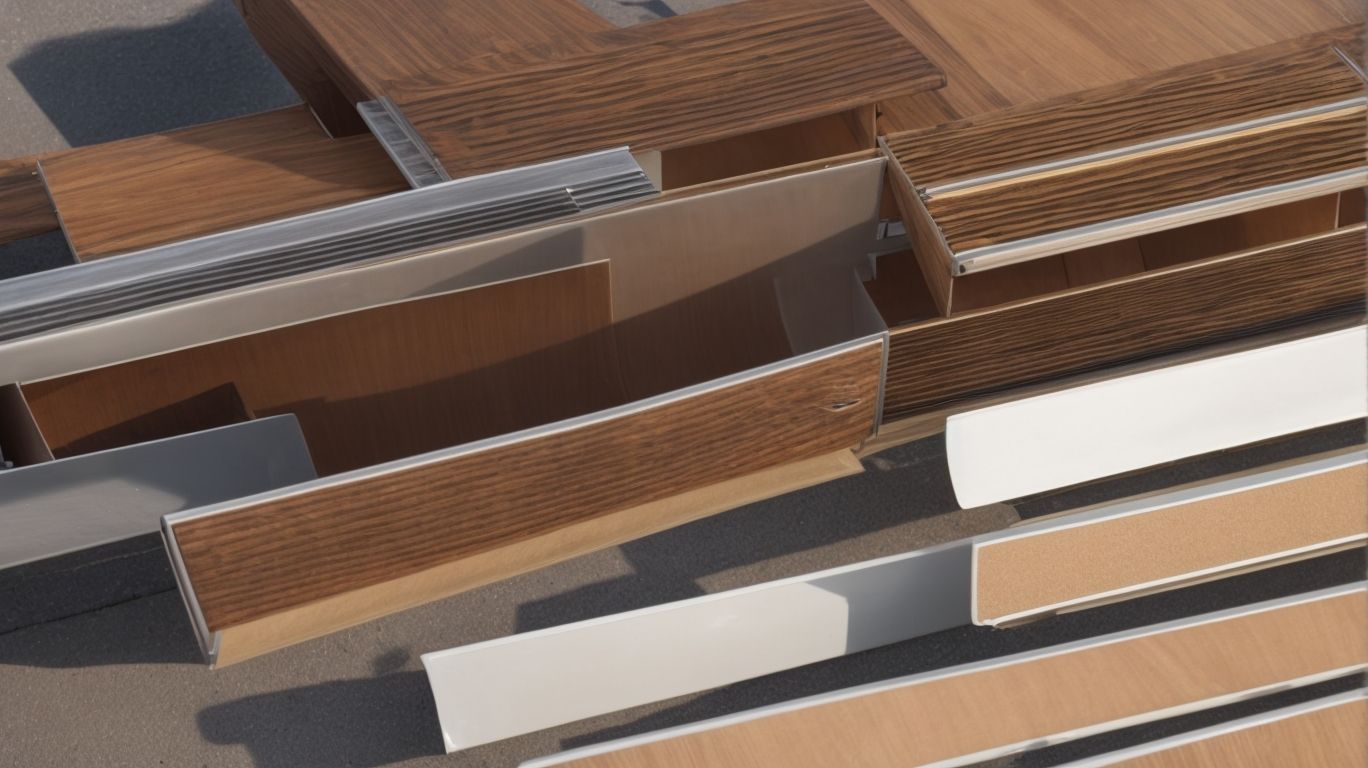
Credits: Motorcaravanning.Com – Jacob Campbell
Maintaining caravan panels involves periodic inspections, prompt repairs for damages, weatherproofing treatments, regular cleaning to preserve aesthetics, and proactive measures to enhance longevity and performance.





During inspections, it is crucial to look for cracks, dents, or discoloration that could indicate potential issues. Repair procedures should be carried out promptly using suitable materials to prevent further damage. Applying weatherproofing treatments, such as sealing seams and applying protective coatings, can safeguard panels from moisture and UV exposure.
Regular cleaning using mild detergent and water helps remove dirt and grime, maintaining the visual appeal. To preserve panels, ensure they are completely dry before storing or covering the caravan. Proactive measures involve avoiding harsh chemicals and impacts to prevent premature wear and tear.
Frequently Asked Questions
What are caravan panels made of?
Caravan panels are typically made of a combination of materials, including aluminum, fiberglass, and wood.
What is aluminum used for in caravan panels?
Aluminum is a common material used in caravan panels because it is lightweight, durable, and resistant to corrosion.
How is fiberglass used in caravan panels?
Fiberglass is often used in the construction of caravan panels because it is strong, flexible, and provides good insulation.
Why is wood used in some caravan panels?
Wood is used in certain areas of caravan panels because it can be easily shaped and provides a sturdy base for other materials to be attached to.
What other materials are used in caravan panels?
In addition to aluminum, fiberglass, and wood, other materials such as foam and composite panels may also be used in creating caravan panels.
Are there different types of caravan panels?
Yes, there are different types of caravan panels made of various materials, each with their own unique benefits and purposes. Some may be better for insulation, while others may be more lightweight or durable.












